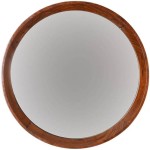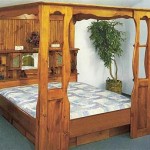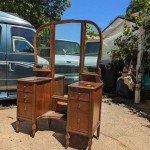Multi-Faceted Mirrors: Reflecting Beyond the Surface
Multi-faceted mirrors, also known as mosaic mirrors or segmented mirrors, offer a unique visual experience compared to traditional flat mirrors. They distort reflections into a multitude of smaller, refracted images, creating captivating patterns and abstract art. Understanding the principles behind these mirrors involves exploring their construction, applications, and impact on perception.
Key Aspects of Multi-Faceted Mirrors
- Construction and Materials
- Optical Principles
- Applications in Art and Design
Multi-faceted mirrors are typically constructed from multiple smaller mirror segments, often triangular or diamond-shaped, arranged on a supporting structure. This structure can be flat or curved, further influencing the final reflected image. The individual mirror segments can vary in size and shape, leading to a wide range of possible configurations and resulting visual effects. Common materials include glass, acrylic, and specialized reflective plastics, each offering different levels of reflectivity, durability, and cost-effectiveness.
Material Considerations
- Glass: Offers high reflectivity but can be fragile.
- Acrylic: Lightweight and durable, suitable for various applications.
- Reflective Plastics: Cost-effective alternatives for less demanding uses.
The kaleidoscopic effect observed in multi-faceted mirrors stems from the laws of reflection. Each individual mirror segment adheres to these laws, reflecting light at an angle equal to the angle of incidence. However, the arrangement of multiple segments at varying angles to each other creates a complex interplay of reflections. Incident light rays bounce off multiple surfaces, creating a fragmented and multiplied image. The angles and positioning of the individual segments dictate the specific pattern formed.
Optical Principles at Play
- Law of Reflection: Angle of incidence equals the angle of reflection.
- Multiple Reflections: Light bounces off multiple mirror segments.
- Image Fragmentation: Creates a mosaic of reflected images.
The unique visual properties of multi-faceted mirrors have found applications in various artistic and design fields. They are utilized in interior design to create visually interesting spaces, adding depth and complexity to a room. In art installations, these mirrors can produce captivating displays, transforming the viewer's perception of space and light. Their ability to distort and fragment images makes them a valuable tool for photographers and filmmakers, offering creative possibilities for manipulating visuals.
Applications in Creative Fields
- Interior Design: Enhancing spatial perception and adding visual interest.
- Art Installations: Creating interactive and immersive experiences.
- Photography and Film: Offering unconventional perspectives and distortions.
Beyond aesthetics, multi-faceted mirrors also hold practical applications in specific scientific and technical contexts. In some optical instruments, such as kaleidoscopes and certain types of telescopes, they are employed to manipulate light paths and create specific visual effects. Researchers also utilize them in studies involving reflection, refraction, and the behavior of light in complex optical systems. These applications demonstrate the versatility of multi-faceted mirrors extending beyond their decorative uses.
Scientific and Technical Applications
- Optical Instruments: Used in kaleidoscopes and specialized telescopes.
- Scientific Research: Studying light behavior in complex systems.
The perceptual effects generated by multi-faceted mirrors are a subject of interest in fields like psychology and cognitive science. The fragmented and distorted reflections can influence depth perception and spatial awareness, challenging the brain's ability to interpret visual information. This aspect makes them valuable tools for studying visual processing and how the brain constructs a coherent representation of the world from sensory input. Further research continues to explore the intricate relationship between multi-faceted mirrors and human perception.
Impact on Perception and Cognition
- Distorted Depth Perception: Challenges spatial understanding.
- Cognitive Studies: Used to investigate visual processing.
The manufacturing techniques for multi-faceted mirrors have evolved over time. Traditional methods involved painstakingly cutting and assembling individual mirror segments. Modern techniques leverage technologies such as laser cutting and precision molding, allowing for more complex designs and greater accuracy in the arrangement of the segments. These advancements continue to expand the possibilities for creating innovative and visually striking multi-faceted mirror designs.
Manufacturing Techniques
- Traditional Methods: Manual cutting and assembly.
- Modern Techniques: Laser cutting and precision molding.
The versatility and unique visual characteristics of multi-faceted mirrors make them a compelling subject of study across diverse fields. From artistic expression to scientific investigation, their ability to manipulate and transform light offers a range of applications, fostering continued exploration and innovation.

Multi Faceted Wall Mirror

Multi Facet Maze Bevelled Mirror 120cm X 80cm

Multi Faceted Wall Mirror

Constantine Multifacet Mirrors Modern Amor Decor

Earthquake Multi Faceted Wall Mirror

Multi Faceted Wall Mirrors Frameless By Com Large Selection Of Silver Black Broe Glass Now On With Free Nationwide Delivery

Large 3d Glass Framed Multi Facet Bevelled Wall Mirror Extra 120 X 80cm

Earthquake Large Multi Faceted Modern Mirror 120cm X 80cm Mirrors Exclusive

Multi Faceted Wall Mirror

Large Multi Facet Frameless Wall Mirror 390 00








